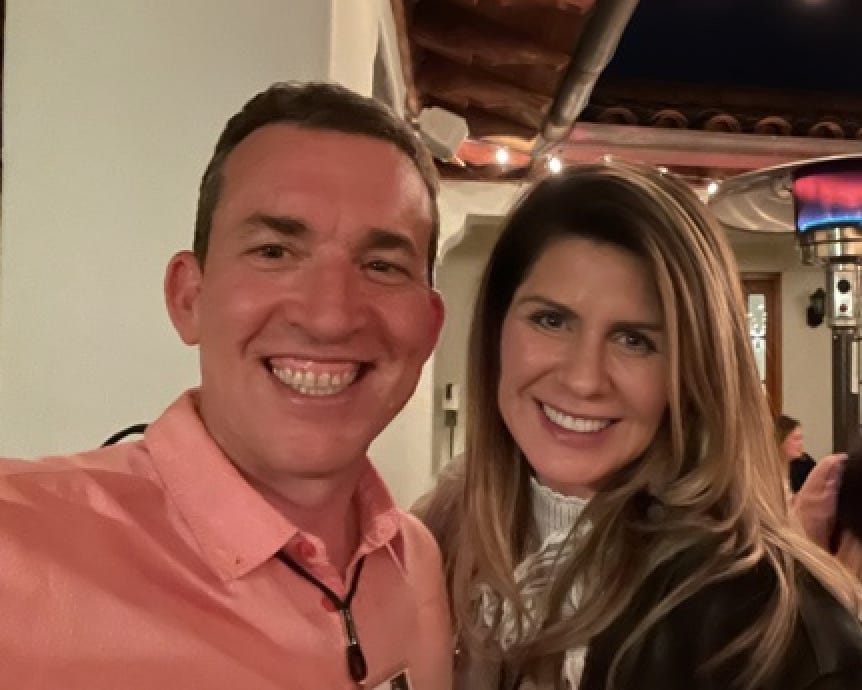A Letter from 2035 California
The Letter from a Future California (23d) Edition of the Negative Foods Newsletter
Sandboxes can be useful sources of inspiration. What can we learn from Iceland, a cold dark island that grows carbon neutral tomatoes in greenhouses with 100% renewable energy? Or Burning Man, a temporary city that aspires to become regenerative?
I’ve been thinking about California as a sandbox for Negative Foods. Do you think of California as a climate lever? Today California farmland makes climate change worse. What if the lever was reversed? The letter below is a thought exercise written from the POV of 2035.
September 24, 2035
What a year 2021 turned out to be. After the lowlights of the 6th IPCC report, the devastating wildfires, the secular drought, the epic floods, the supply chain shortages, and the beginning of the end of the pandemic, California began the amazing journey of transforming its farmland to reverse climate change.
It didn’t happen immediately, of course, but the incremental changes started back then began to crank a flywheel that is now a (literal) force of nature. How did it all start?
Some people credit government interventions. Governments played a role, to be sure, but in my opinion the markets deserve the credit. Once effective carbon labels were in place, consumers drove demand for Negative Foods in a way that caused a virtuous race to the top.
How did we get carbon labels? In 2029 the federal government mandated standardized carbon labeling, but by then the good had already been done. To my surprise, it was Big Food that made the difference, led by Unilever in 2022.
Why did they do it? Initially Big Food was responding to pressure from investors and employees. But once consumers could make choices based on carbon emissions, food brands with carbon advantages began disclosing their footprints for the sake of winning market share. And it worked.
But the food entrepreneurs were the real disrupters. With venture war chests, they moved faster and innovated better than Big Food. Informed by carbon label data, consumers perceived (correctly) that Negative Foods were better for the planet (they reverse climate change) and better for their health (they have more nutrition). Consumers began paying more for Negative Foods and choosing them over other foods. Negative Foods therefore increasingly captured greater market share. It was like the organic movement during the 20 years before 2021, but much bigger and much faster (and based on clearer evidence).
As startup food brands with carbon negative footprints ate Big Food’s lunch, it was inevitable that Big Food companies began acquiring successful startup brands, and those exits begat a funding craze that resulted in even more Negative Foods startups. That virtuous cycle pushed Big Food to themselves become more and more regenerative. Foods that weren’t carbon negative began to be ostracized by a society that grew tired of a warming planet and sought lifestyles choices that improved their health and reversed climate change.
Markets proved to be a powerful force. As big and small food companies aggressively pivoted toward carbon negative food supply chains, farms converted to regenerative practices and crops at a dizzying pace. It wasn’t smooth, and it wasn’t easy for many people in the industry, but it worked.
Political opposition fell away. By 2025, there was nearly nobody left who hadn’t smelled the smoke, seen the floods or had a loved one or colleague negatively impacted by a hurricane. Benjamin Backer helped drive the climate deniers out of the GOP leadership by rallying young conservatives to leverage climate mitigation as a force for economic growth (the farmers and hunters were already convinced). That’s a major reason why Backer is now the senior United States Senator from Wisconsin, and why Americans got aligned on taking steps to eliminate carbon emissions from our economy.
In 2021, regenerative beef farming was in its pioneering phase, with tens of thousands of Golden State acres. Now California has millions of acres of rotating grasslands producing carbon negative beef. Millions of California acres are now dedicated to olive orchards and other perennial tree crops that sequester carbon. And so many other carbon sequestering crops exploded in California acreage in less than a decade, such as cacao, mangoes, avocados, breadfruit, jackfruit, pine nuts, monkey puzzle, black walnut and baobob. Industries that were unable to eliminate their emissions, such as concrete and steel, are now paying California landowners to maintain biodiverse forests in former California farmland to offset their industrial emissions.
Now California’s farmland and forests successfully sequester carbon, store water, host wildlife and outdoor recreation, and in many other ways improve the lives of Californians and Americans. In one generation, California was transformed from a lever that spewed greenhouse gases into a lever that removed huge quantities of greenhouse gasses from the atmosphere.
But what about the fruits & vegetables displaced by this transformation? We obviously didn’t run out of food. The consumption of beef and highly processed foods decreased. Many crops, such as leafy greens, tomatoes, cucumbers and peppers, shifted to renewable energy greenhouses closer to the markets where the products are consumed. The American bent toward creative destruction helped us change quickly and successfully.
Climate change still caused devastation, of course, and hundreds of millions of humans are still suffering and displaced. But the worst case scenarios were avoided because we changed our economies and our food systems. California led the way, providing the world with an important example that inspired other agricultural regions of the world to convert their farmland to levers that are now also removing greenhouse gasses from the atmosphere.
Feedback:
My friend Fernanda Monroe of Miami is unhappy that organic food hasn’t made the environment better in the United States. She wants to know what to feed her children if organic has jumped the shark. In the photo below she’s not smiling inside!
For your consideration:
Portland regenerative farming lender raises $8.8M from investors
‘Diet for a Small Planet’ helped spark a food revolution. 50 years later, it’s evolving.
‘We must go further’... Nestlé invests a billion euros in regenerative agricultural push
Most Agricultural Spending Does More Harm Than Good, UN Report Claims
Cargill to Pay Farmers for CO2 Reduction
Climate change tops agenda as Iceland heads to elections
Net zero isn’t enough. We need to get to net negative
The views in this newsletter belong solely to Paul Lightfoot (and not to BrightFarms or other organizations). This newsletter accepts no advertising. Learn more about this newsletter at https://paullightfoot.substack.com/about.





Paul - Love the positive approach. I too hope 2021 is a tipping point for action and shift to a higher gear (speed) although I expect we are in for many more & bigger bumps than outlined here. Getting conservatives on this train is critical and thanks for the exposure to a young group going that way, I am there but many more need to be onboard. Hope to cross paths soon. JH